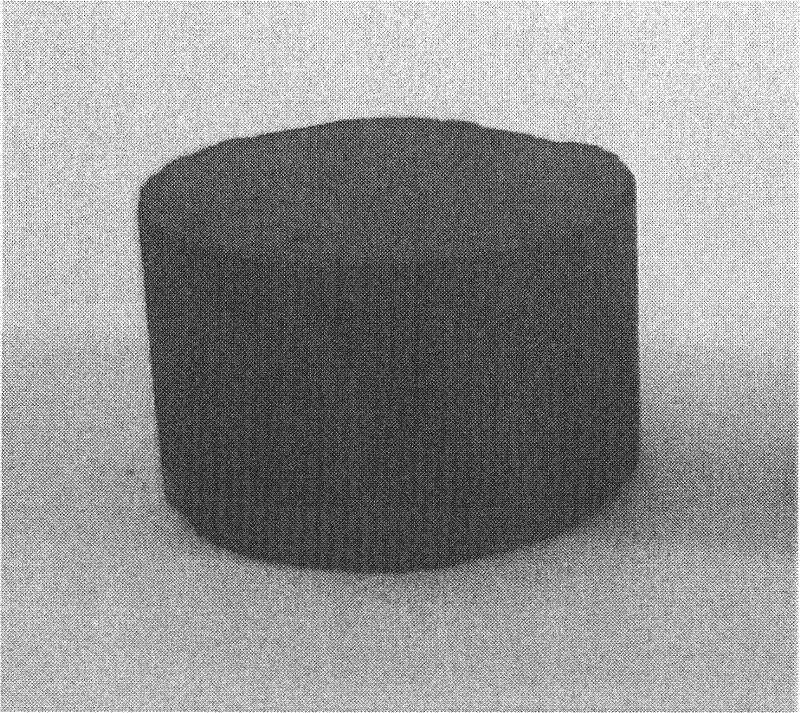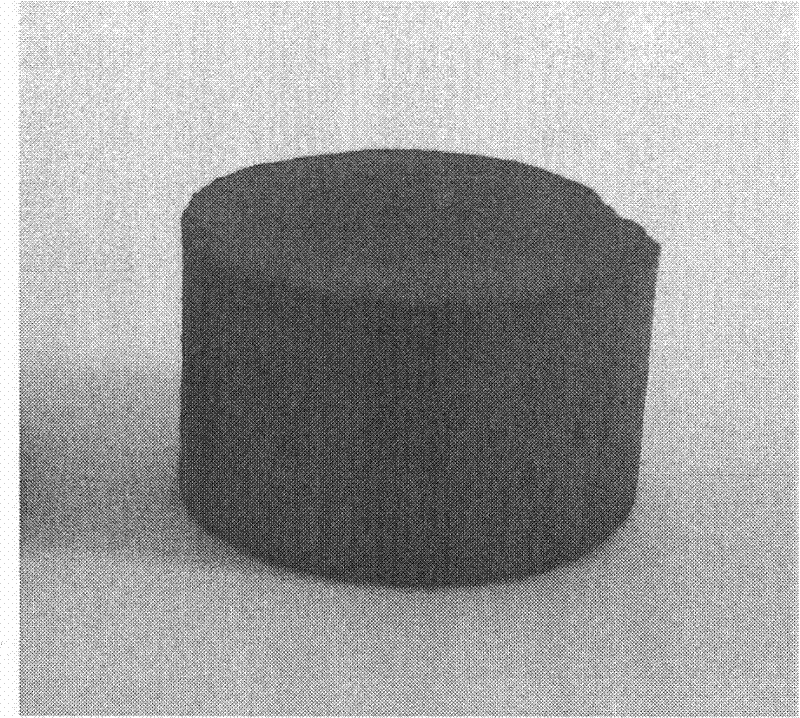Porous conductive MAX phase ceramics and preparation method and use thereof
A porous conductive and ceramic technology, which is applied in the field of porous conductive ceramics, can solve the problems of peeling off of the active layer, complex molding process, and large difference in thermal expansion coefficient of the active layer of the catalyst.
- Summary
- Abstract
- Description
- Claims
- Application Information
AI Technical Summary
Problems solved by technology
Method used
Image
Examples
Embodiment 1
[0022] Ti 3 SiC 2 The powder (particle size 2-5 microns) was wet-milled in a planetary ball mill jar for 2 hours, dried at room temperature, and then cold-pressed for 5 minutes under a pressure of 25 MPa to form. The green body after cold pressing is put into the atmosphere furnace and sintered for 2 hours. The atmosphere is argon, the heating rate is 10°C / min, and the sintering temperature is 1200°C. Thus, a porous and conductive MAX phase ceramic is obtained, with a porosity of 54% after sintering and an open porosity of 98%. After sintering, the porous ceramics maintain the shape of the green body well, such as figure 1 shown.
Embodiment 2
[0024] Ti 3 AlC 2 The powder (particle size 2-5 microns) was wet-milled in a planetary ball mill jar for 10 hours, dried at room temperature, and then cold isostatically pressed for 20 minutes under a pressure of 200 MPa to form. The green body formed by cold isostatic pressing was put into an atmosphere furnace for sintering for 0.5 hours. The atmosphere is argon, the heating rate is 10°C / min, and the sintering temperature is 1400°C. Thus, porous and conductive MAX phase ceramics are obtained, with a porosity of 20% after sintering and an open porosity of 85%.
Embodiment 3
[0026] Ti 2 AlC powder (particle size 2-5 microns) was wet-milled in a planetary ball mill jar for 5 hours, dried at room temperature, and then cold-pressed at 20 MPa for 10 minutes to form it. The body after cold pressing was put into an atmosphere furnace and sintered for 0.5 hour. The atmosphere is vacuum (vacuum degree is 10 -2 Pa), the heating rate is 5°C / min, and the sintering temperature is 1200°C. Thus, porous and conductive MAX phase ceramics are obtained, with a porosity of 60% after sintering and an open porosity of 98%.
PUM
| Property | Measurement | Unit |
|---|---|---|
| porosity | aaaaa | aaaaa |
| porosity | aaaaa | aaaaa |
| porosity | aaaaa | aaaaa |
Abstract
Description
Claims
Application Information
 Login to View More
Login to View More - R&D
- Intellectual Property
- Life Sciences
- Materials
- Tech Scout
- Unparalleled Data Quality
- Higher Quality Content
- 60% Fewer Hallucinations
Browse by: Latest US Patents, China's latest patents, Technical Efficacy Thesaurus, Application Domain, Technology Topic, Popular Technical Reports.
© 2025 PatSnap. All rights reserved.Legal|Privacy policy|Modern Slavery Act Transparency Statement|Sitemap|About US| Contact US: help@patsnap.com


